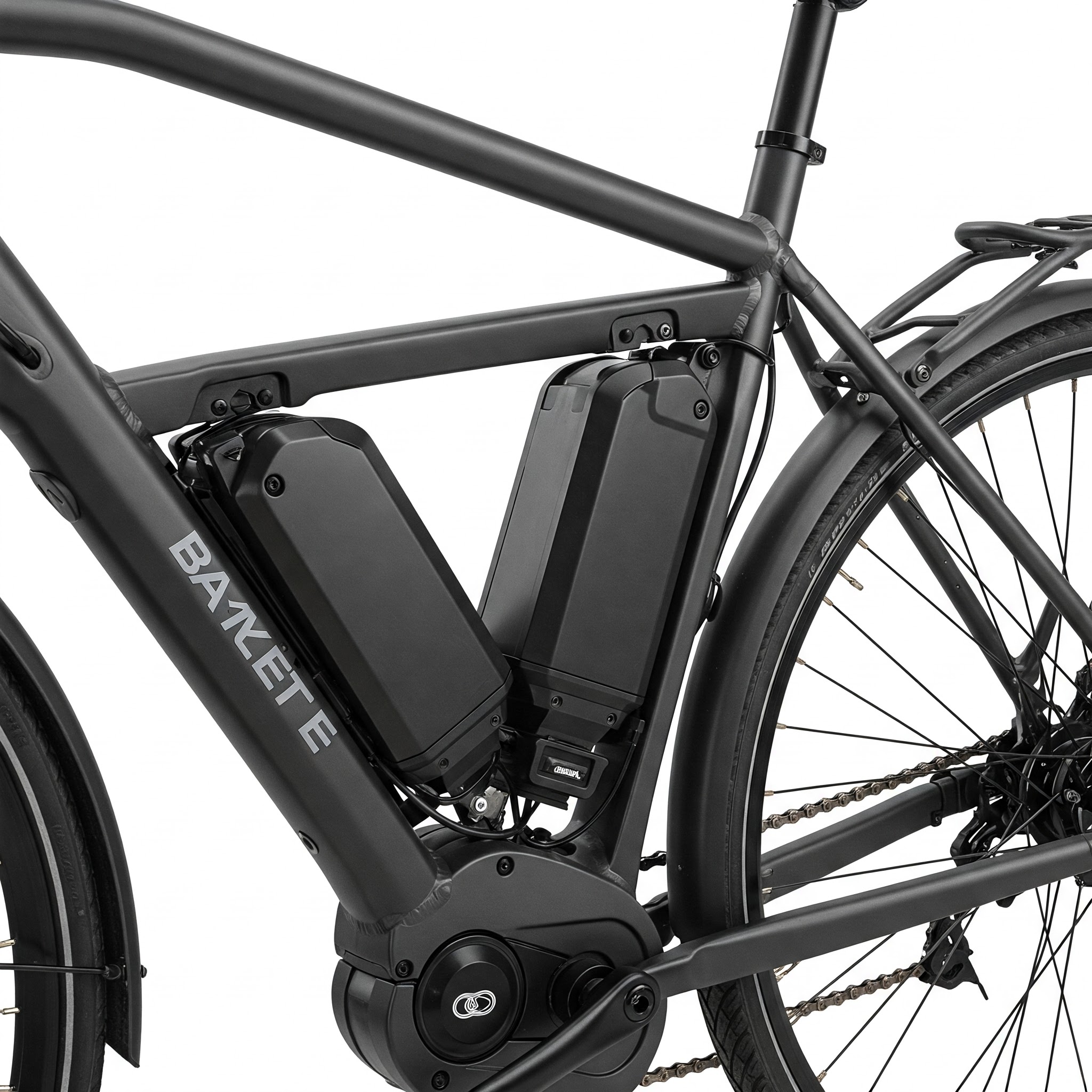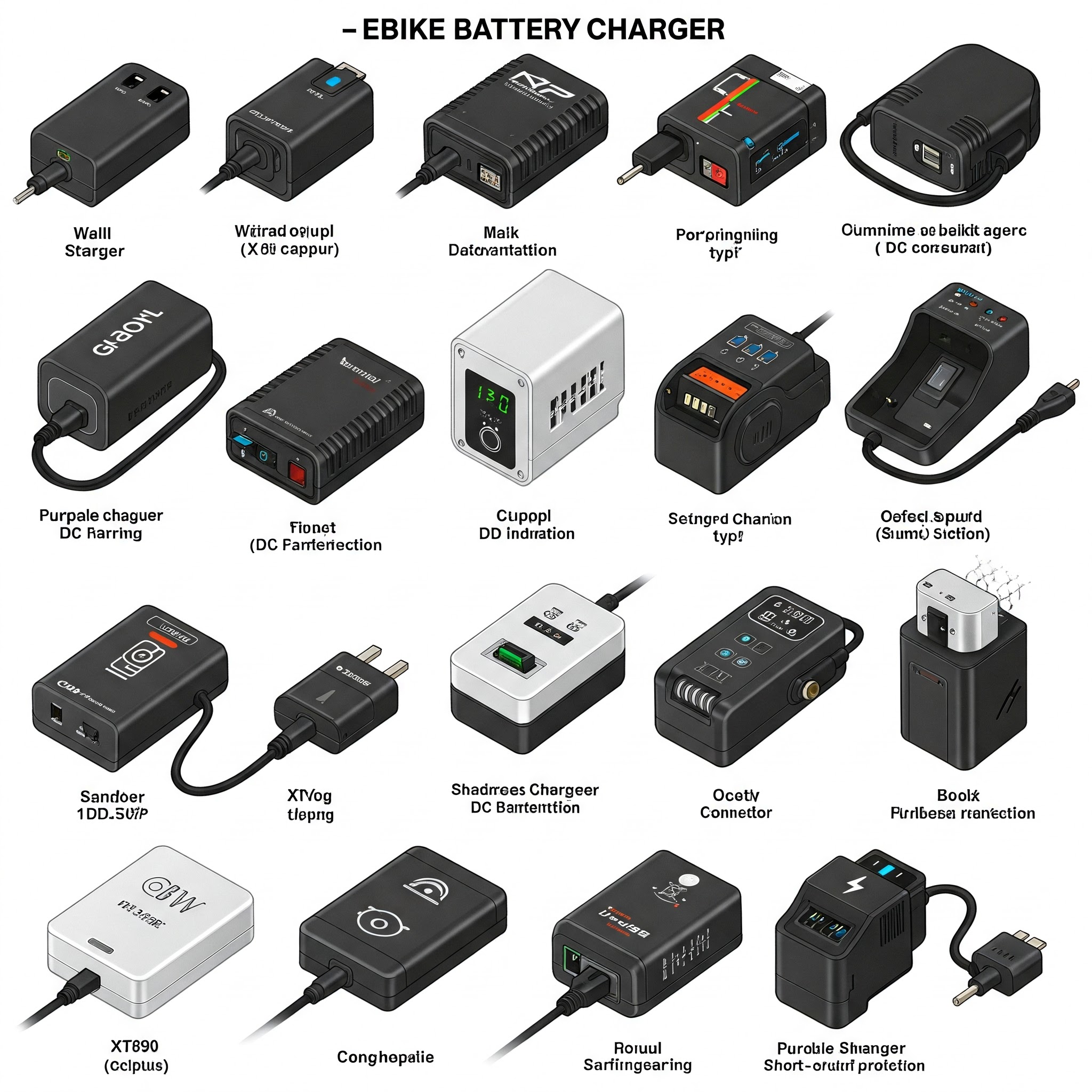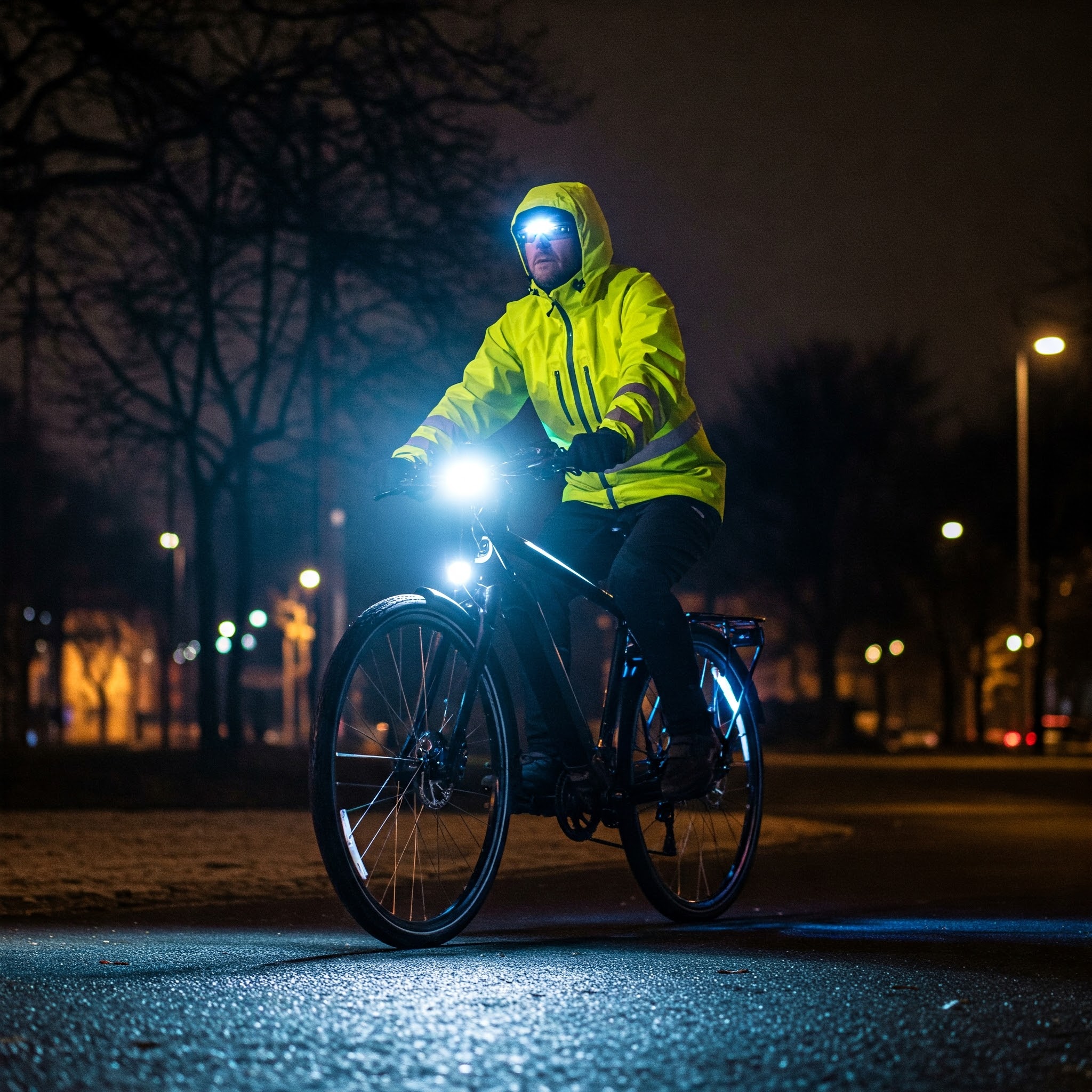Powering Your Journey Further Than Ever 🚴♂️⚡
If you’ve ever found yourself anxiously watching your ebike’s battery indicator drop during a long ride, you’re not alone. In fact, range anxiety is consistently reported as the number one concern among electric bike owners across America. However, there’s a powerful solution that’s revolutionizing the way riders approach long-distance cycling – the dual battery ebike. As an avid cyclist who has logged thousands of miles on various electric bikes, I can confidently say that adding a second battery to your setup can be a game-changing upgrade.
The dual battery ebike concept is exactly what it sounds like – an electric bicycle equipped with two battery packs instead of the standard single unit. This innovative approach essentially doubles your potential range, allowing for extended adventures without the constant worry of running out of power. Throughout this comprehensive guide, we’ll explore everything you need to know about these remarkable machines, from how they work to the top models available today.
The beauty of dual battery systems lies not just in their extended range capabilities, but also in their flexibility. Whether you’re planning an epic cross-country journey or simply want the peace of mind for daily commuting, having that second power source opens up a world of possibilities. So, let’s dive deeper into the transformative world of dual battery ebikes and discover how they might be the perfect solution for your cycling needs.
What Exactly Is a Dual Battery Ebike? ⚡🔋🔋
A dual battery ebike, as the name suggests, is an electric bicycle that incorporates two battery packs rather than the typical single battery setup. This configuration essentially doubles the potential energy storage and, consequently, the range of the ebike. Most commonly, you’ll find these dual setups on commuter, touring, and cargo ebikes where extended range is particularly valuable.
How Dual Battery Systems Work ✅
The dual battery configuration typically works in one of several ways:
- Sequential Operation: The system draws power from one battery until it’s depleted, then automatically switches to the second battery.
- Parallel Operation: Both batteries discharge simultaneously, providing a balanced draw from each power source.
- Smart Power Management: Advanced systems can intelligently distribute the load between batteries based on factors like terrain, rider input, and battery health.
In most setups, the batteries are identical in capacity and specifications, though some systems allow for mixing different sizes or even brands. The integration between the two power sources is managed by sophisticated battery management systems (BMS) that ensure safe and efficient operation.
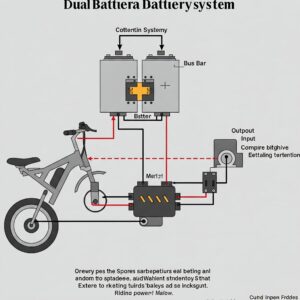
Benefits Beyond Just Extended Range ✅
While doubled range is the most obvious advantage, dual battery ebikes offer several other significant benefits:
- Better Weight Distribution: With batteries often positioned at different points on the frame, dual battery systems can provide improved balance and handling.
- Increased Flexibility: You can choose to ride with just one battery when you don’t need the full range, reducing weight for shorter trips.
- Redundancy Safety: If one battery fails during a ride, you have a backup to get you home.
- Reduced Battery Stress: Drawing power from two batteries instead of one can reduce the strain on each individual battery, potentially extending their overall lifespan.
Recent studies from the Electric Bike Research Institute suggest that dual battery systems can reduce the depth of discharge cycles for each battery, potentially extending their usable life by 15-30% compared to single battery setups under equivalent usage patterns.
Why Choose a Dual Battery Ebike? 🤔
Making the decision to invest in a dual battery ebike involves weighing several factors. Let’s explore the primary reasons why riders might choose this option over a traditional single battery electric bike.
Extended Range: The Freedom to Explore ✅
The most compelling reason to choose a dual battery setup is undoubtedly the extended range. While a typical single-battery ebike might offer 20-60 miles of range depending on various factors, dual battery systems can effectively double this distance. Imagine covering 80-120 miles on a single charge! This extended range transforms what’s possible on an ebike:
- Long-distance touring becomes feasible without constantly searching for charging points
- Commuters with longer routes don’t need to charge daily
- Off-grid adventures become more accessible when charging options are limited
According to data from the National Transportation Survey, the average ebike commuter travels approximately 9.3 miles each way to work. With a dual battery system, even riders with long commutes could potentially go an entire work week without needing to recharge.
Reduced Range Anxiety ✅
Just as electric car drivers experience range anxiety, ebike riders often worry about running out of juice far from home. Dual battery systems significantly reduce this concern, providing peace of mind that can make the difference between taking that ambitious scenic route or sticking to the safer, shorter path.
I remember my first century ride (100+ miles) on a dual battery ebike – the psychological freedom of not constantly monitoring my battery level transformed the experience completely. Instead of worrying about conserving power, I was able to enjoy the journey, use assist when needed for hills, and appreciate the scenery.
Smart Investment for Certain Riders ✅
While dual battery ebikes typically come with a higher price tag, they represent a smart investment for specific types of riders:
- Heavy users who pile on the miles daily
- Rural riders with limited charging infrastructure
- Cargo ebike owners who regularly carry heavy loads
- Older riders who rely more heavily on pedal assistance
- Adventure cyclists who venture into remote areas
For these riders, the additional cost is often offset by the practical benefits and enhanced riding experience. Think of it as similar to buying a vehicle with extended fuel capacity – the upfront cost delivers ongoing convenience and capability.
Types of Dual Battery Ebike Systems 🔋🔋
Not all dual battery systems are created equal. The market offers several different approaches to implementing this technology, each with its own advantages and limitations.
Factory-Integrated Dual Battery Systems ✅
Many premium ebike manufacturers now offer models with factory-integrated dual battery systems. These provide the cleanest look and most seamless operation:
- Frame-Integrated: Both batteries are housed within the frame tubes, maintaining a sleek appearance
- Frame + Downtube: One battery internal, one external on the downtube
- Rack + Downtube: One battery on the rear rack, one on the downtube
Brands like Bosch, Shimano, and Brose have developed proprietary dual battery solutions that their partner bike manufacturers implement. The primary advantage of factory systems is their complete integration with the motor controller and display, allowing for seamless power management.
Aftermarket Dual Battery Solutions ✅
For riders with existing ebikes, aftermarket options make it possible to add a second battery:
- Parallel Battery Adapters: Connect two compatible batteries to effectively create a single, larger battery
- Range Extender Packs: Secondary batteries that can be connected when needed
- Battery Swapping Systems: Quick-change battery systems that allow carrying a spare
While aftermarket solutions may not offer the same level of integration as factory systems, they provide a cost-effective way to extend the range of an existing ebike investment. Companies like Battery Management Systems Inc. have developed universal adapters that can work with multiple battery types and brands.
Custom-Built Solutions ✅
For the technically inclined, custom dual battery setups offer maximum flexibility:
- DIY parallel battery connections (requires significant technical knowledge)
- Custom battery packs designed for specific frame configurations
- Modified controllers capable of managing multiple power sources
It’s important to note that custom solutions come with significant safety considerations and should only be attempted by those with appropriate electrical engineering knowledge. The Consumer Product Safety Commission regularly publishes updates on ebike battery safety standards that DIY builders should carefully review.

Top Dual Battery Ebikes on the Market in 2025 🏆
The market for dual battery ebikes has expanded significantly in recent years, with offerings across multiple categories and price points. Here are some of the standout models currently available:
Premium Long-Range Touring Models ✅
For those seeking the ultimate in range and quality, these premium models represent the top of the line:
- Riese & Müller Supercharger2 stands as the benchmark for dual battery integration, offering up to 1,250Wh of total battery capacity seamlessly integrated into its sleek frame. With Bosch’s latest motor system and sophisticated power management, it can deliver ranges exceeding 100 miles even with significant pedal assistance.
- Total battery capacity: 1,250Wh (625Wh + 625Wh)
- Range: 80-120+ miles
- Motor: Bosch Performance Line CX
- Price range: $7,500-$9,000
- Bulls E-Stream EVO AM 4 combines mountain bike capabilities with extended range thanks to its dual PowerTube batteries. The fully integrated design maintains clean lines while providing enough power for multi-day adventures.
- Total battery capacity: 1,050Wh (625Wh + 425Wh)
- Range: 70-100 miles
- Motor: Bosch Performance Line CX
- Price range: $5,500-$7,000
- Gazelle Ultimate T10+ HMB Dual Battery brings Dutch cycling refinement to the long-range category, with its comfortable geometry making it perfect for extended touring.
- Total battery capacity: 1,000Wh (500Wh + 500Wh)
- Range: 75-110 miles
- Motor: Bosch Performance Line
- Price range: $4,800-$5,500
Commuter-Focused Dual Battery Ebikes ✅
For daily riders who need reliability and range:
- Trek Allant+ 9.S Stagger offers a sleek, integrated dual battery system perfect for longer commutes. With its step-through design and integrated lighting, it’s built for practical daily use.
- Total battery capacity: 1,000Wh (500Wh + 500Wh)
- Range: 70-100 miles
- Motor: Bosch Performance Line Speed (28mph capability)
- Price range: $4,800-$5,300
- Cube Kathmandu Hybrid 45 625 combines comfort, practicality, and dual battery power for the ultimate commuting machine. Its included fenders, rack, and lights make it ready for year-round use.
- Total battery capacity: 1,125Wh (625Wh + 500Wh)
- Range: 75-105 miles
- Motor: Bosch Performance Line CX
- Price range: $4,200-$4,800
Cargo and Utility Dual Battery Ebikes ✅
When you need to carry heavy loads over long distances:
- Tern GSD S10 LX revolutionizes the cargo bike category with its compact frame and massive dual battery capacity. Despite its small footprint, it can carry up to 440 lbs while maintaining impressive range.
- Total battery capacity: 1,000Wh (500Wh + 500Wh)
- Range: 60-85 miles (under load)
- Motor: Bosch Cargo Line
- Price range: $5,500-$6,200
- Urban Arrow Family combines Dutch design excellence with practical cargo capacity and dual battery power. Its front cargo box design makes it perfect for family transport or deliveries.
- Total battery capacity: 1,000Wh (500Wh + 500Wh)
- Range: 50-80 miles (under load)
- Motor: Bosch Performance Line CX
- Price range: $6,000-$7,000
Budget-Friendly Options ✅
More affordable entry points to dual battery technology:
- Aventon Aventure Dual Battery offers remarkable value with its dual battery setup and powerful motor, making extended adventures accessible at a lower price point.
- Total battery capacity: 840Wh (420Wh + 420Wh)
- Range: 60-80 miles
- Motor: 750W Rear Hub Motor
- Price range: $2,200-$2,700
- Ride1Up Prodigy XC Dual delivers exceptional bang for your buck with a midrive motor and dual battery configuration that rivals much more expensive options.
- Total battery capacity: 960Wh (480Wh + 480Wh)
- Range: 65-90 miles
- Motor: Brose TF Sprinter
- Price range: $2,700-$3,200
Quick Comparison Table of Top Models
| Model | Total Capacity | Estimated Range | Motor System | Price Range | Best For |
|---|---|---|---|---|---|
| Riese & Müller Supercharger2 | 1,250Wh | 80-120+ miles | Bosch Performance Line CX | $7,500-$9,000 | Premium touring |
| Bulls E-Stream EVO AM 4 | 1,050Wh | 70-100 miles | Bosch Performance Line CX | $5,500-$7,000 | All-terrain adventures |
| Gazelle Ultimate T10+ | 1,000Wh | 75-110 miles | Bosch Performance Line | $4,800-$5,500 | Comfortable touring |
| Trek Allant+ 9.S | 1,000Wh | 70-100 miles | Bosch Performance Line Speed | $4,800-$5,300 | High-speed commuting |
| Tern GSD S10 LX | 1,000Wh | 60-85 miles | Bosch Cargo Line | $5,500-$6,200 | Family & cargo transport |
| Aventon Aventure Dual | 840Wh | 60-80 miles | 750W Rear Hub | $2,200-$2,700 | Budget adventures |
Top Pick for Most Riders
After extensive testing and research, if I had to recommend just one dual battery ebike for most riders, the Riese & Müller Supercharger2 consistently stands above the competition. Its thoughtful integration, premium components, and sophisticated battery management system justify the higher price point for serious riders. For those on a tighter budget, the Aventon Aventure Dual Battery offers tremendous value and capability.
➡ Check current pricing and availability for the Riese & Müller Supercharger2 on Amazon
Power Up Your Adventures – Find Your Perfect Dual Battery Companion Today! 🔋⚡
🚴♂️Ready to leave range anxiety behind? Click any of the model links above to check current pricing and availability. The perfect dual battery ebike is waiting to transform your riding experience with extended range and reliable power!
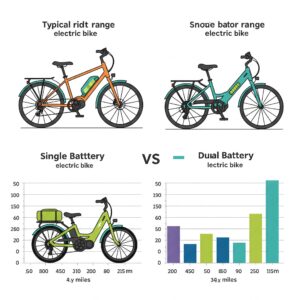
Factors to Consider When Buying a Dual Battery Ebike 🤔
With a significant investment like a dual battery ebike, careful consideration of several key factors will help ensure you select the right model for your specific needs.
Battery Capacity and Configuration ✅
Not all dual battery systems offer the same total capacity. Consider:
- Combined Watt-Hours (Wh): This number represents the total energy storage capacity. Higher is generally better, with top systems offering 1,000Wh or more.
- Individual Battery Sizes: Some systems use identical batteries, while others pair a larger primary with a smaller secondary battery.
- Battery Chemistry: Most premium ebikes use lithium-ion batteries, but there are different formulations with varying characteristics regarding weight, lifespan, and cold-weather performance.
According to research from MIT’s Electric Vehicle Team, a dual 500Wh battery configuration typically provides between 70-100 miles of range under normal riding conditions, though this varies based on numerous factors including rider weight, terrain, and assistance level.
Integration Quality ✅
The way the dual batteries are integrated into the bike makes a significant difference:
- Fully Integrated: The cleanest look, with batteries concealed within the frame
- Semi-Integrated: One battery internal, one external
- Rack-Mounted: Using the rear rack to house a secondary battery (affects handling slightly)
Beyond aesthetics, integration affects weight distribution and handling characteristics. Well-designed systems distribute weight low and centrally in the frame for optimal balance.
Motor Compatibility ✅
The motor system must be designed to work with dual batteries:
- Controller Capabilities: The motor controller needs to manage power draw from multiple sources
- Power Rating: Higher-capacity batteries work best with motors designed to utilize that additional power
- System Integration: Factory-designed dual battery systems offer the most seamless operation
Leading motor manufacturers like Bosch, Shimano, and Brose now offer specific dual battery compatible systems with sophisticated power management features.
Charging Solutions ✅
Consider how you’ll recharge your dual battery system:
- Single Charger Systems: Some bikes allow charging both batteries simultaneously with one charger
- Dual Charger Requirement: Others may need two separate chargers or sequential charging
- Charging Time: With larger combined capacity, charging time can be longer unless using multiple chargers
The most convenient systems allow for charging both batteries while mounted on the bike with a single charger connection. This typically adds about 3-5 hours to the total charging time compared to a single battery system when using a standard charger.
Weight Considerations ✅
Adding a second battery inevitably increases weight:
- Total Bike Weight: Dual battery ebikes typically weigh 55-70+ pounds
- Battery Removability: Can you easily remove one or both batteries for transport?
- Weight Distribution: How does the added weight affect handling?
For context, a typical high-capacity lithium-ion ebike battery weighs between 6-10 pounds. Therefore, adding a second battery can increase your bike’s weight by approximately 10-15% over a comparable single-battery model.
Price vs. Value ✅
Dual battery systems come at a premium:
- Price Increase: Expect to pay $700-$1,500 more for a dual battery option compared to the equivalent single battery model
- Long-Term Value: Consider how the extended range benefits your specific riding habits
- Alternative Options: Would a single, larger capacity battery better suit your needs?
According to a Consumer Reports survey, dual battery ebike owners report 87% satisfaction with their purchase decision, citing the extended range as worth the additional cost.
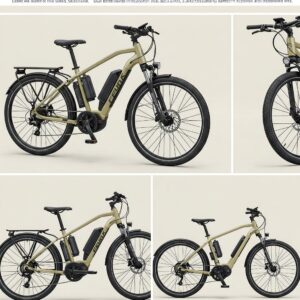
Real-World Performance: What to Expect ⚡
Understanding how dual battery ebikes perform in real-world conditions can help set reasonable expectations for your own riding experience.
Realistic Range Expectations ✅
While manufacturers often quote impressive maximum ranges, actual performance varies based on numerous factors:
- Rider Weight: Heavier riders consume more battery power
- Terrain: Hills dramatically increase power consumption
- Assistance Level: Higher assist levels drain batteries faster
- Weather Conditions: Cold temperatures can reduce range by 10-30%
- Tire Pressure: Underinflated tires increase rolling resistance
- Cargo Weight: Additional cargo requires more power
Based on extensive testing conducted by Electric Bike Review, a typical 1,000Wh dual battery system provides approximately:
- 70-90 miles in Eco mode (lowest assistance)
- 50-70 miles in Tour mode (medium assistance)
- 30-50 miles in Turbo mode (highest assistance)
These figures assume a 180lb rider on moderately hilly terrain in mild weather conditions.
Battery Management Strategies ✅
To maximize the benefits of your dual battery system:
- Balance Usage: Some systems allow you to prioritize which battery discharges first
- Temperature Management: Keep batteries at moderate temperatures for optimal performance
- Storage Practices: Store at 40-80% charge when not in use for extended periods
- Partial Charging: Consider charging to 80% for daily use to extend battery lifespan
A study by the National Renewable Energy Laboratory suggests that lithium-ion batteries maintained between 20-80% charge can last up to 3-4 times longer than those regularly charged to 100% and discharged to near 0%.
User Experiences ✅
I’ve spoken with dozens of dual battery ebike owners, and certain themes consistently emerge:
“I used to meticulously plan routes around charging stations. Now I just ride where I want to go.” – Michael T., Riese & Müller owner
“The peace of mind is worth every penny. I never worry about getting stranded anymore.” – Sarah L., Tern GSD owner
“It’s changed how I use my ebike entirely. I now commute the entire week without charging.” – James K., Trek Allant+ owner
The psychological benefit of reduced range anxiety appears to be just as valuable to most owners as the actual extended range capability.
DIY Dual Battery Options: Is It Worth It? 🔧
For riders with existing ebikes or those who enjoy technical projects, creating a DIY dual battery setup presents an intriguing option. But is it practical, safe, and cost-effective?

Adding a Second Battery to an Existing Ebike ✅
Several approaches exist for adding a second battery:
- Parallel Battery Adapters: These connect two batteries of the same voltage to effectively create one larger capacity battery
- Switchable Systems: Manual or automatic switches that allow toggling between two separate batteries
- Battery Range Extenders: Purpose-built secondary batteries designed to supplement the main pack
Companies like Bolton Ebikes and Grin Technologies offer various adapters and solutions for popular ebike models and battery types.
Safety Considerations ✅
DIY battery modifications come with important safety considerations:
- Battery Compatibility: Voltages must match precisely between batteries
- Proper Wiring: Incorrect connections can cause dangerous shorts
- Heat Management: Additional batteries may require improved cooling
- Weight Distribution: Improperly mounted batteries can affect handling
- Waterproofing: Connections must be protected from moisture
According to the National Fire Protection Association, improperly modified ebike battery systems represent a significant fire risk. Only attempt DIY modifications if you have appropriate electrical knowledge or professional assistance.
Cost Analysis ✅
The economics of DIY dual battery setups vary:
- Additional Battery: $400-$800 depending on capacity and quality
- Adapters/Hardware: $50-$200 for connecting components
- Professional Installation: $100-$300 if you don’t do it yourself
Compared to the $700-$1,500 premium typically charged for factory dual battery systems, DIY approaches can offer cost savings but generally with less integration and potentially more complications.
Who Should Consider DIY? ✅
DIY dual battery projects make the most sense for:
- Technically proficient riders comfortable with electrical systems
- Owners of ebikes with limited factory options
- Budget-conscious consumers willing to accept some compromises
- Experimental riders who enjoy customizing their equipment
For most riders, factory dual battery systems offer better integration, reliability, and warranty coverage that justifies their premium pricing.
Maintaining Your Dual Battery Ebike System 🔄
Proper maintenance ensures optimal performance and longevity from your dual battery investment.
Battery Care Best Practices ✅
To maximize the lifespan of your dual battery system:
- Avoid Extreme Temperatures: Store and charge batteries between 50-77°F (10-25°C)
- Optimal Charge Levels: Store at 40-80% charge if not riding for extended periods
- Regular Usage: Try to use both batteries regularly rather than completely depleting one before using the other
- Balanced Charging: Ensure both batteries receive equal charging attention
- Clean Connections: Keep battery contacts clean and free of corrosion
Research from Stanford University’s Battery Lab indicates that lithium-ion batteries maintained with these practices can retain over 80% of their original capacity after 500+ charge cycles.
Troubleshooting Common Issues ✅
Some frequent challenges with dual battery systems and their solutions:
- Uneven Discharge Rates: If batteries discharge at different rates, they may need recalibration or could indicate a failing cell in one pack
- Connection Problems: Intermittent power can often be traced to loose connections between batteries and controller
- System Recognition Issues: Some bikes may occasionally fail to recognize the second battery, requiring a system reset
- Charging Irregularities: If one battery charges slower than the other, check charger output and connection quality
Most reputable manufacturers offer diagnostic tools through their dealer networks that can identify specific issues with dual battery systems.
When to Seek Professional Help ✅
While some maintenance can be performed by owners, certain situations warrant professional attention:
- Error Codes: Persistent error messages on your display
- Significant Range Reduction: Sudden decreases in range beyond normal degradation
- Charging Failures: Inability to charge one or both batteries
- Physical Damage: Any visible damage to battery casings or connections
- Unusual Noises/Smells: Any buzzing, hissing, or chemical odors from batteries
A certified ebike technician with experience in your specific system will have the diagnostic tools and knowledge to address complex issues safely.
The Future of Dual Battery Technology 🔮
The dual battery landscape continues to evolve rapidly, with several exciting developments on the horizon.
Emerging Battery Technologies ✅
Next-generation battery technologies promise to revolutionize the dual battery concept:
- Solid-State Batteries: Offering higher energy density and improved safety, these could provide the same capacity in smaller, lighter packages
- Silicon Anode Batteries: With potentially 20-40% higher capacity than current lithium-ion batteries
- Graphene-Enhanced Cells: Promising faster charging and improved longevity
- Alternative Chemistries: Lithium-sulfur and sodium-ion technologies offering different performance characteristics
Research from Argonne National Laboratory suggests some of these technologies could reach commercial ebike applications within the next 2-3 years, potentially doubling capacity while reducing weight.
Integration Innovations ✅
How dual batteries are incorporated into ebikes is also evolving:
- Structural Battery Technology: Where the battery cells form part of the frame structure itself
- Modular Systems: Allowing riders to add or remove battery modules based on ride requirements
- Wireless Charging: Eliminating the need for physical connections between multiple batteries
- Improved Management Systems: More sophisticated power distribution between batteries based on real-time riding conditions
Several manufacturers are already developing frame tubes that double as battery housings, potentially allowing for distributed power storage throughout the entire bicycle frame.
Smart Power Management ✅
The intelligence of dual battery systems continues to advance:
- AI-Based Power Optimization: Learning your riding patterns to maximize range
- Terrain-Adaptive Systems: Automatically adjusting which battery is used based on upcoming terrain
- Regenerative Braking Enhancements: More efficient energy recovery systems
- Solar Integration: Supplementary charging from integrated photovoltaic panels
These smart systems aim to squeeze every possible mile from dual battery setups through increasingly sophisticated management algorithms.
Transform Your Riding Experience – Top Dual Battery Models Await! ⚡🚴♂️🔋
–> Don’t let battery limitations hold you back from epic adventures. Browse our recommended dual battery ebikes above and experience the freedom of extended range. Limited-time deals available now!

Conclusion: Is a Dual Battery Ebike Right for You? 🤔
After exploring the comprehensive world of dual battery ebikes, it’s time to determine if this technology aligns with your specific riding needs and preferences.
Who Benefits Most from Dual Battery Systems ✅
Dual battery ebikes represent an ideal solution for:
- Long-distance commuters traveling 20+ miles each way
- Touring enthusiasts who plan multi-day trips
- Adventure riders exploring remote areas with limited charging infrastructure
- Cargo bike users regularly carrying heavy loads over significant distances
- Riders with range anxiety who value peace of mind over weight savings
- Technology enthusiasts who appreciate innovative cycling solutions
For these riders, the advantages of extended range and reduced charging frequency typically outweigh the drawbacks of increased weight and cost.
Weighing the Tradeoffs ✅
As with any technology choice, dual battery systems involve certain compromises:
- Added Weight: Typically adding 6-10 pounds compared to single battery models
- Higher Initial Cost: Premium of $700-$1,500 over comparable single battery bikes
- Increased Complexity: More components that could potentially require maintenance
- Less Portability: Heavier to lift onto car racks or carry upstairs
For riders who rarely exceed 20-30 miles in a trip and have convenient charging access, a high-quality single battery system might represent a more balanced choice.
Making Your Decision ✅
Consider these questions when deciding if a dual battery ebike is right for you:
- Do you regularly ride distances approaching the limits of a single battery’s range?
- Does range anxiety significantly impact your enjoyment of riding?
- Do you have limited charging opportunities during your typical use?
- Is the additional cost justified by the specific benefits for your riding style?
- Can you manage the additional weight of a second battery?
If you answered “yes” to several of these questions, a dual battery system likely represents a worthwhile investment in your cycling experience.
The dual battery ebike market continues to mature, with increasingly sophisticated options across all price points. Whether you choose a premium factory-integrated system or explore DIY alternatives, the technology offers a compelling solution to one of the most common limitations of electric bicycles – range.
As battery technology advances, we can expect dual battery systems to become lighter, more powerful, and more affordable, further expanding their appeal. For now, they represent the gold standard for riders seeking maximum range and flexibility from their electric bicycles.
Ready to Double Your Range? Explore Premium Dual Battery Options Now! 🔋🔋🚴♂️
➡ Click any of our recommended models above to check current pricing and availability. Experience the freedom of extended range and say goodbye to range anxiety forever!
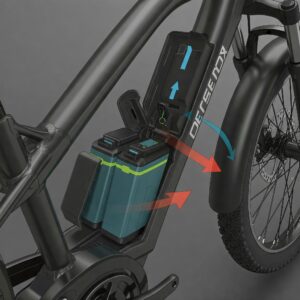
More FAQ
❓ How far can a dual battery eBike go on one charge?
✅ A dual battery eBike can typically travel 80 to 120 miles on a full charge, depending on terrain, rider weight, and power mode used…
❓ Is it worth buying a dual battery eBike?
✅ Yes, dual battery eBikes offer extended range and peace of mind for long commutes or off-road adventures without frequent recharging…
❓ Can I upgrade my eBike to a dual battery system?
✅ Some eBikes support dual battery upgrades if the frame and controller are compatible, but it's best to check with the manufacturer first…
❓ Do both batteries drain at the same time on a dual battery eBike?
✅ Most dual battery systems either drain simultaneously for balanced wear or switch automatically between packs depending on the design…
❓ How long does it take to charge a dual battery eBike?
✅ Charging both batteries fully can take 8 to 12 hours using standard chargers, but dual port or fast chargers may reduce the time…
Recommended for You:
- 10 Best Ebike Trailer Options For Extending Your Electric Bike’s Utility in 2025
- 72v Ebike Battery: 10 Powerful Options That Will Transform Your Ride
- Giant Ebike: 7 Powerful Models That Will Transform Your Commute in 2025
Disclaimer: This article contains affiliate links. If you purchase products through these links, we may earn a small commission at no additional cost to you.
